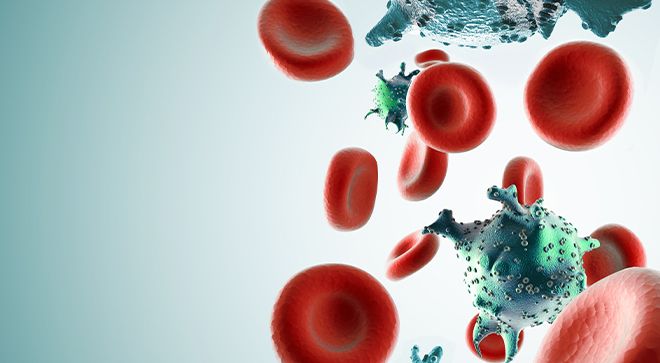Article
'Victories' After Multiple Myeloma
Author(s):
Meet four patients with multiple myeloma who have found hope and improved quality of life by participating in endurance events.
Jamie Alamillo had been in the shower when suddenly he couldn’t move anything from the waist down. He immediately yelled to his wife for help. The two of them managed to get down the stairs, out of the house and into the couple’s minivan, and his wife rushed him to the emergency room (ER).
There, he underwent extensive testing. “A lot of it was a blur,” recalled Alamillo in an interview with CURE®. An X-ray revealed that his back was broken and he was rushed into a six-hour surgery. Doctors discovered that Alamillo had spinal cord compression and two lesions on his back, and that vertebrae T4 and T7 were broken.
That’s when Alamillo learned he had stage 3 multiple myeloma and was told he would never walk again. “Amazingly, I took it with a grain of salt,” he said. “I was ready to get going with therapy. I had to keep moving forward.”
He began radiation therapy and chemotherapy, and a few months later was walking with assistance. That was in fall 2013. Now 48, Alamillo is not only walking again but is back on his bicycle to raise awareness and funding for the disease.
Cycling for a Cure
Multiple myeloma is a type of blood cancer that affects plasma cells. It is estimated that more than 32,000 adults will receive a diagnosis this year in the United States. Although it is rarely curable, the disease can often be managed with medications.
Such is the case for Alamillo, who remains on Revlimid (lenalidomide), an immunomodulatory drug that helps support immune system function, and goes for blood tests every three months. Aside from a small limp after a long day of work and some numbness, he said he feels great and is thankful to be alive for his wife and two small children.
Like many other patients with multiple myeloma, Alamillo is inspired to help find a cure not only for himself but also for the thousands of others who will be affected by this cancer.
That’s why he and a team of 29 other people challenged themselves to a bike ride from Vermont to Quebec, Canada. When the Road to Victories tour took place Sept. 17, riders had four distance options to choose from ranging from 163 to 287 miles. The endurance event is hosted by the Multiple Myeloma Research Foundation (MMRF), a nonprofit organization that provides accurate and up-to-date information on the disease and spearheads innovative research through funds raised each year. Since 2017, Janssen Oncology has sponsored the Road to Victories program, which has now raised more than $1.6 million for the MMRF's research efforts.
Randi Schwartz found the MMRF soon after her 2016 diagnosis, turning to the organization to help her choose doctors and treatment options and find other patients for support.
Schwartz said she was blindsided by her multiple myeloma diagnosis. An avid athlete, she said she was in the best shape of her life and very in tune with her body. Schwartz competed regularly in races but noticed herself becoming weaker. Eventually, after a half marathon, she ran herself into the hospital, where doctors told her she had acute kidney failure and anemia. They diagnosed her with rhabdomyolysis, a serious syndrome due to a direct or indirect muscle injury.
But she didn’t get better. The following month, her brother-in-law, who is a kidney doctor, ran additional tests. That was when she received a diagnosis of multiple myeloma.
“I knew in my heart I wasn’t gonna be running for a long time,” Schwartz said. “But my lifestyle prepared me to take on cancer, and to take it on in a way that I could live gracefully.”
A year after receiving a stem cell transplant, Schwartz joined the MMRF’s inaugural Road to Victories event, riding 540 miles from Los Angeles to Flagstaff, Arizona. She is a top fundraiser who has brought in more than $100,000 for the MMRF.
This year, she completed every mile of the ride and called it a “transformational experience.” “When you bring people together like that, you let all trivialities of life fall to the wayside and you connect on a deeper level. It makes this disease visible,” Schwartz said.
“I thought I’d never be able to do the things I love again,” she added. “But there is opportunity for that once you get past the tough stuff. I’m creating education, hope and inspiration for people.”
‘By My Side’ Warriors
Tim Nash shares the same sentiment. After receiving a multiple myeloma diagnosis four years ago, the lifelong cyclist began reading about endurance events like Road to Victories, as well as different summits, such as one that took place on Mount Kilimanjaro. He read about another patient, Chuck Wakefield, who had completed both, and was “blown away.”
“Here I was feeling so bad that just getting from the couch to the refrigerator felt like a mountain climb, and these people were climbing the world's highest free-standing mountain,” Nash said.
He met Wakefield and a few others the following year for dinner as they passed through Ohio during a cross-country trek. Nash joined them the next morning for part of the ride but could only make it 2 miles.
That moment became a beacon of hope, Nash recalled. He began to ride more and more, eventually training and going to local spin classes. He changed his diet, eliminating sugar and fast food.
During the ride this year, Nash rode 250 miles. “After going through that stem cell transplant … to have your wind, soul and energy knocked out of you, it’s discouraging,” he said. “So, to be able to bike was truly a moment for me. It showed me that we can get better. There is hope for us.”
Hope comes not only from the inspirational stories of the men and women who are living — and living well — with multiple myeloma, but also from the cutting-edge research being conducted. The $430,000 raised through the 2019 Road to Victories ride will help push the treatment landscape forward. Over the past six years, through its collaborations with medical teams and pharmaceutical companies, the MMRF has helped bring seven new drugs to market.
“For all of us with multiple myeloma, our lives consist of a drug or combo of drugs that we take until they aren’t effective, (and) then we shift directions to a different drug,” Jeffery Goad, who received a stage 4 myeloma diagnosis nine and half years ago, said. “This is necessitated by the fact that myeloma is clever and constantly evolving in our bodies.”
Goad understands this well after an MRI last December revealed four new lesions across his pelvic bone and a large one on his rear hip socket. His doctor told him that he could no longer run, heavy lift or perform high-impact activities. “’But I can still cycle, right?’” Goad asked. “(My doctor) paused for a moment and said with a smile, ‘Sure, just don’t fall on that hip!’”
After years of running marathons and summiting Mount Kilimanjaro and Mount Everest Base Camp — both summits part of the Moving Mountains for Multiple Myeloma program, a collaboration between CURE Media Group and the MMRF — Goad’s new focus on cycling led him to the Road to Victories event. With his two brothers by his side, he rode almost 300 miles.
“I feel so blessed to have such a supportive immediate and extended family — not just emotionally and financially, but true ‘by my side’ warriors focused on the goal of a cure,” Goad said. “This gives me hope and inspiration to keep planting a flag on the horizon and working and training to get there.”




